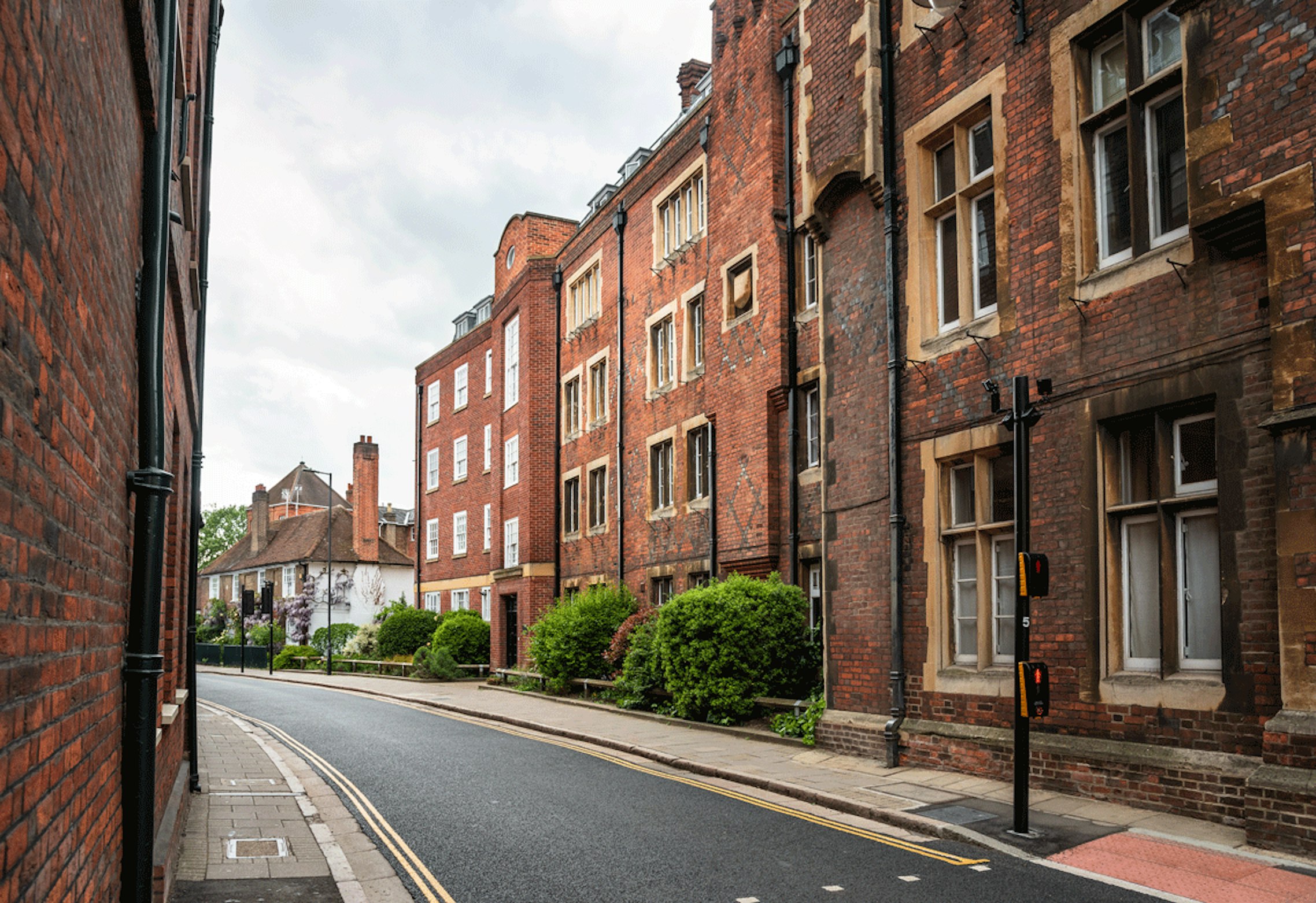How to find out when your house was built
Have you ever wondered when your house was built? If so, you’re not alone. Many homeowners are curious about their property’s history and previous owners. There are practical reasons for determining the age of a property, particularly when it comes to maintaining and insuring it. Therefore, this information is vital for landlords as well. This article will help you determine the age of your home and examine some of the benefits of knowing it.
By Alan Boswell Group

Why the age of your home matters
There are many good reasons for finding out when your home was built. Firstly, it can help you understand the true cost of rebuilding your property. This is a vital piece of information when getting a home insurance quote, as you’ll typically find that you can’t get a quote without it. Generally, you’ll pay a higher premium to insure older properties as they tend to be more expensive to rebuild.
Secondly, knowing the age of your home can help you choose the right building materials and methods to use for repairs and renovations, as well as any restrictions that might apply.
Finally, it can be interesting to learn more about your home’s history, including how it has changed over time, and its place in your community.
A step-by-step guide to finding your property's construction date
If you want to find out when your house was built, there are several methods available. It’s fairly easy to track down the relevant information for modern houses. However, older properties can be more challenging. To help, we suggest you try the following:
Step 1: Check your property documents
The easiest place to start is to review the paperwork you already have. You may have paid for a survey when you bought your home. Alternatively, your mortgage lender will have completed one when determining the property value. This document will normally tell you either the exact or approximate date that the property was built. People are more likely to get a survey done on an older property than a new one, due to concerns about age-related wear and tear. If you still have your mortgage offer documents, they may also contain this information.
If you have access to your title deeds, they will provide information that you can also find in a Title Register or Title Sheet. However, if you have a mortgage, your lender will normally hold the deeds. While you can ask to see your deeds at any time, it’s normally simpler to check online with the relevant land registry (more on this below).
The previous owners of your home will have provided a TA6 Property Information Form prior to selling the property to you, which will also contain detailed information about the property.
Step 2: Search HM Land Registry
HM Land Registry maintains a public record of land ownership and property transactions in England and Wales. Its primary function is to accurately record property ownership, rights, and interests in land. It maintains one of Europe’s largest property databases, comprising 26 million titles that cover 88% of the land mass of the two countries. You can search for your property using this tool.
Once you’ve located your property, you can consult a free property summary. This tells you its address, the tenure type (e.g. freehold or leasehold), when it was last sold (and for how much), plus an indication of whether the property is subject to any restrictive covenants (things you can’t do with the land) or easements (rights of one piece of land over another, such as rights of way).
However, if you want to find out approximately how old your house is, you’ll need to download the Title Register for a small fee. The register will not list the date your property was built, but if it was first sold by the developer who built it, the date of this first sale will be documented. This will give you an approximate age for your home.
Scotland has two property registers: the Land Register and the Sasine Register. The Sasine Register is the world’s oldest national public land register, dating back to 1617. It is currently being replaced by the Land Register. You can find details about how to search both registers here.
Northern Ireland also has its own Land Registry. If your property isn’t registered, you’ll need to consult the Registry of Deeds. This comprises paper records from 1923 and digital records from 1st January 1990. Searching land records in Northern Ireland can be complex – you’ll normally need to visit one of five Land and Property Services (LPS) offices or, to consult deeds before 1990, the Public Record Office of Northern Ireland.
Step 3: Consult historical maps and census returns
If you have an older home, you can explore historical maps and census records.
Historical maps: Maps can help you deduce when a property was built. Comparing historical Ordnance Survey Maps may help you determine when your property was mapped for the first time. Your local library service may hold historical maps of your area. You can also try historical map deposit libraries such as the British Library, the National Library of Wales, or the National Library of Scotland. Fire insurance maps at the British Library can be helpful if your home was built between 1886 and 1930.
Census returns: Census records (taken every 10 years) can identify a build date to within a decade if the property appears on one census but not the previous one. Censuses have been conducted every ten years since 1801, although personal details were not officially recorded until 1841. For example, if your property is listed in the 1881 census but not in the 1871 survey, it’s highly likely to have been built between those dates. You can search census records for England, Wales and Scotland up to 1921. More recent census data for England and Wales is held by the Office for National Statistics, and by Scotland’s Census for Scotland. Unfortunately, only the complete 1901 and 1911 censuses are available for Ireland and Northern Ireland. A limited number of records survive for the three Irish censuses between 1821 and 1851.
Step 4: Contact local and national archives
If your house is relatively modern, your local authority may be able to help you pinpoint when it was built. Since 1st July 1948, new developments have required planning permission. Many councils have digitised more recent records and put them online, but for earlier ones, you’ll need to contact the relevant planning department. Once you know when planning permission for your home was granted, it’s likely that building began shortly afterwards.
Local archives are also a good place to find documents, including plans, photographs or deeds, that may help you date your home. Local authority archives are a good place to start, but remember that many universities and other archives hold land and estate records. You can search for archives by country and region here.
Using architectural styles to estimate your home's age
Even with all the information we’ve discussed to hand, you may still draw a blank. This is more common with older homes, built when records were sparse or non-existent. Don’t despair, though; there are still ways to find out approximately when a property was built. Considering which architectural period your home belongs to can help narrow it down. Here are some of the key eras and features to look out for:
Victorian (1837-1901): Encompasses a wide range of styles, from neo-Gothic country houses to small brick cottages. Common features include coloured brickwork, bay windows, high ceilings, and no garage.
Edwardian (1901-1910): Similar to the Victorian era, though houses were often broader, with larger halls and tended to feature red brickwork and mock-Tudor cladding.
1930s: Built during the interwar period, these homes feature hipped roofs, curved bay windows, porches, and often a garage, as well as stained-glass details.
Post-war (1950s-1970s): Properties built during this period vary widely, but tend to feature simpler designs with less ornamentation and a greater focus on functionality.
Talk to an insurance broker
As you’ve seen, there are many techniques for finding out the age of your home. If you are a homeowner, you’ll need this information to get an accurate quote from a home insurance broker. It’s wise to have insurance that reflects the true cost of rebuilding your home, as being underinsured when you need to make a claim can be costly.
Landlords also need to know the age of the properties they let. This is not only to secure appropriate landlord buildings insurance. Older properties are often less secure, so the age of a property will impact premiums for cover such as unoccupied property insurance.
Send an enquiry
FAQs
This is fairly common with older properties. If you can’t find out when your house was built from records, you will have to date it from its architectural style and features. An architecture expert, chartered surveyor, or local historian may be able to help you do this relatively accurately. This should at least allow you to provide a reasonably narrow date range or estimated year of construction.
Age will be a factor in determining your home insurance premium, as the rebuild value of your property is partially determined by its age and the construction methods used. Additionally, outdated materials and worn infrastructure can increase the likelihood of making a claim.
Listed buildings are officially recognised as having special architectural or historic interest and are protected by law to preserve their character. If your home is a listed building, you may be able to find out when it was built by consulting the relevant register. You can search online using the National Heritage List for England (NHLE), the National Historic Assets of Wales, or the database maintained by Historic Environment Scotland. You’ll also need to consider specialist listed building insurance.
New build houses are generally a lot easier to date than older ones. HM Land Registry are likely to have full details (see section 2 above), while your local authority will have details of planning applications and approvals. If it’s very recent, you could check with the developer or the estate agent if it’s been resold since it was first purchased.
Related guides and insights

Guide to renting out a property furnished or unfurnished
Are you unsure whether it’s best to let your property furnished or unfurnished? Our guide looks at the pros, cons, and implications for both kinds of let.

How to accurately estimate your home’s rebuild cost
We look at why rebuild cost is so important, how to accurately calculate it, and why underinsuring your home can lead to serious financial repercussions.

Do I need insurance for a vacant property?
Unoccupied property insurance covers empty homes. Without it, you may not be covered for risks like theft, damage, or vandalism. Here, we explore who might need unoccupied home insurance and why.

Damp and mould in rental property
Damp and mould can cause serious issues. Here, we take a look at the causes of damp and the responsibilities tenants and landlords both have in resolving the problem.
